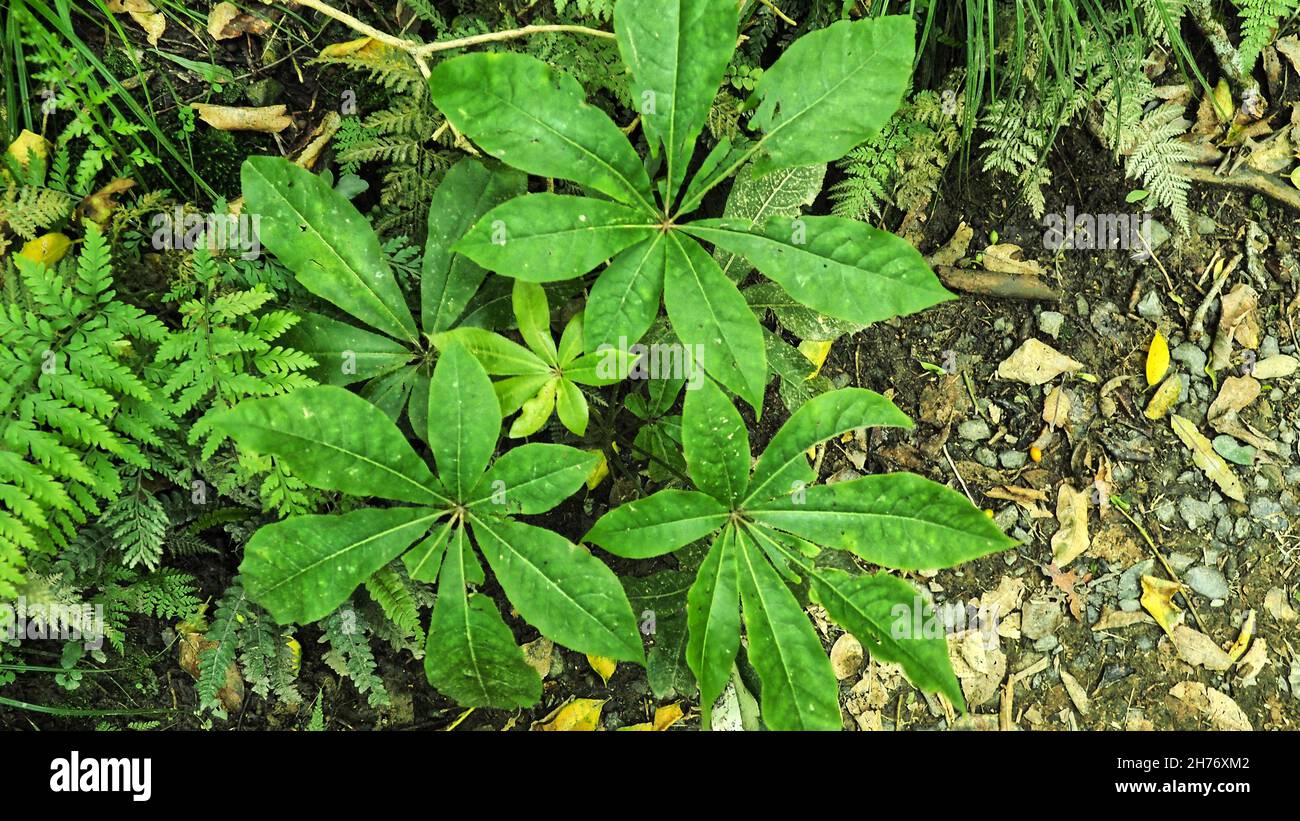Five finger plant uses have captivated cultures for centuries, offering a wealth of benefits that range from healing ailments to culinary delights and landscaping beauty. This versatile herb, known for its distinctive five-lobed leaves, has earned a place in traditional medicine, kitchens, and gardens worldwide.
From treating wounds to enhancing culinary creations, the five finger plant unveils its multifaceted nature, inviting us to explore its rich history and practical applications.
Medicinal Uses of Five Finger Plant

The five finger plant, also known as Potentilla reptans, has been traditionally used for centuries in various cultures for its medicinal properties.
Traditional medicinal uses of the five finger plant include treating wounds, skin conditions, and respiratory issues. In some cultures, it has also been used as a diuretic, astringent, and anti-inflammatory agent.
Wound Healing
The five finger plant has been traditionally used to promote wound healing due to its astringent properties. Astringents help to contract and tighten tissues, which can help to close wounds and reduce bleeding. Additionally, the plant contains tannins, which have antibacterial and antifungal properties that can help to prevent infection.
Skin Conditions
The five finger plant has also been used to treat a variety of skin conditions, including eczema, psoriasis, and acne. The plant’s anti-inflammatory properties can help to reduce redness and swelling, while its antibacterial properties can help to fight infection.
Respiratory Issues
The five finger plant has been traditionally used to treat respiratory issues, such as coughs, colds, and bronchitis. The plant’s expectorant properties can help to thin and loosen mucus, making it easier to cough up. Additionally, the plant’s anti-inflammatory properties can help to reduce inflammation in the airways.
Scientific Evidence
There is some scientific evidence to support the traditional medicinal uses of the five finger plant. For example, a study published in the journal “Planta Medica” found that the plant’s extract had antibacterial and antifungal activity against a variety of bacteria and fungi. Additionally, a study published in the journal “Phytotherapy Research” found that the plant’s extract had anti-inflammatory activity in vitro.
Culinary Applications of Five Finger Plant

The five finger plant, also known as Potentilla reptans, offers a unique and flavorful addition to culinary creations. Its versatility extends from salads to beverages, with its leaves, flowers, and roots finding culinary applications.
Culinary Versatility, Five finger plant uses
The five finger plant possesses a mild, slightly astringent flavor that complements both sweet and savory dishes. Its leaves, rich in vitamins and minerals, can be incorporated raw into salads or cooked as a leafy green vegetable. The flowers, with their delicate sweetness, add a vibrant touch to salads, desserts, and herbal teas. The roots, when dried and ground, serve as a flavorful spice.
Recipes and Techniques
- Five Finger Plant Salad: Combine fresh five finger plant leaves, chopped cucumber, red onion, and crumbled feta cheese. Dress with a simple vinaigrette made with olive oil, lemon juice, and honey.
- Five Finger Plant Pesto: Blend fresh five finger plant leaves, basil, pine nuts, Parmesan cheese, and olive oil until smooth. Use as a sauce for pasta, pizza, or grilled meats.
- Five Finger Plant Tea: Steep dried five finger plant flowers in hot water for 5-10 minutes. Enjoy as a refreshing and soothing herbal tea.
Preparation and Storage
When using five finger plant for culinary purposes, select fresh, healthy leaves and flowers. Thoroughly wash and dry the plant parts before use. The leaves can be stored in the refrigerator for up to 3 days, while the flowers should be used fresh. The roots, once dried, can be stored in an airtight container for several months.
Landscaping and Ornamental Uses of Five Finger Plant: Five Finger Plant Uses

Five finger plants, with their distinctive foliage and attractive blooms, offer a range of aesthetic and practical benefits in landscaping and ornamental applications. Their versatility allows them to enhance various outdoor spaces, from gardens to parks and even urban environments.
Design Considerations
Incorporating five finger plants into a landscape plan requires careful consideration of their growth habits, soil preferences, and companion planting options. These plants thrive in well-drained, moist soil and prefer partial shade to full sun exposure. They can grow up to 3 feet tall and 2 feet wide, making them suitable for borders, ground covers, or accent plants in mixed beds.
Companion planting with other shade-loving species, such as hostas, ferns, or impatiens, can create a visually appealing and diverse ecosystem in the garden. Five finger plants can also be used as a natural ground cover to suppress weeds and retain soil moisture.
Key Features and Benefits
| Feature | Benefit |
|---|---|
| Attractive foliage | Adds texture and color to the landscape |
| Blooming flowers | Provides nectar for pollinators |
| Adaptable to various soil types | Tolerates a wide range of pH levels |
| Low maintenance | Requires minimal watering and fertilization |
| Deer-resistant | Protects plants from browsing damage |
